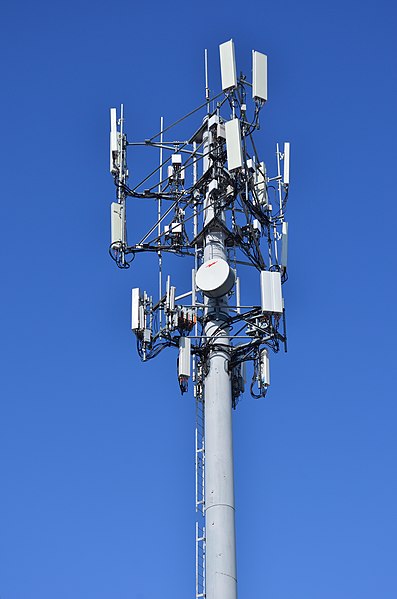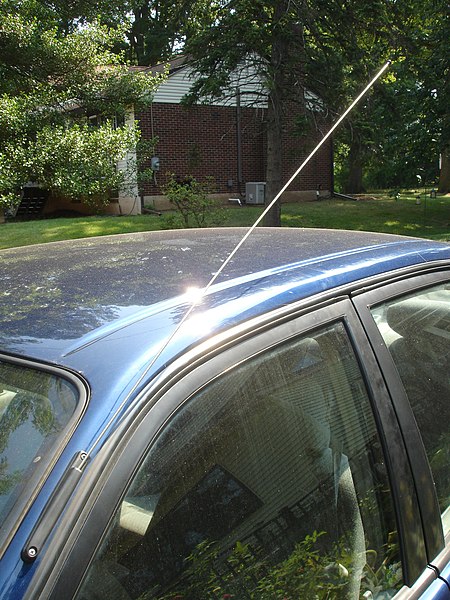Numerical Electromagnetics Code
The Numerical Electromagnetics Code, or NEC, is a popular antenna modeling computer program for wire and surface antennas. It was originally written in FORTRAN during the 1970s by Gerald Burke and Andrew Poggio of the Lawrence Livermore National Laboratory. The code was made publicly available for general use and has subsequently been distributed for many computer platforms from mainframes to PCs.
This 16-element log-periodic design is similar to the 12-element one being modeled in the example deck.
In radio engineering, an antenna or aerial is the interface between radio waves propagating through space and electric currents moving in metal conductors, used with a transmitter or receiver. In transmission, a radio transmitter supplies an electric current to the antenna's terminals, and the antenna radiates the energy from the current as electromagnetic waves. In reception, an antenna intercepts some of the power of a radio wave in order to produce an electric current at its terminals, that is applied to a receiver to be amplified. Antennas are essential components of all radio equipment.
Multiple patch (rectangular) antennas found atop a Cellular Tower
Antennas of the Atacama Large Millimeter/submillimeter Array
An automobile's whip antenna, a common example of an omnidirectional antenna
Half-wave dipole antenna





